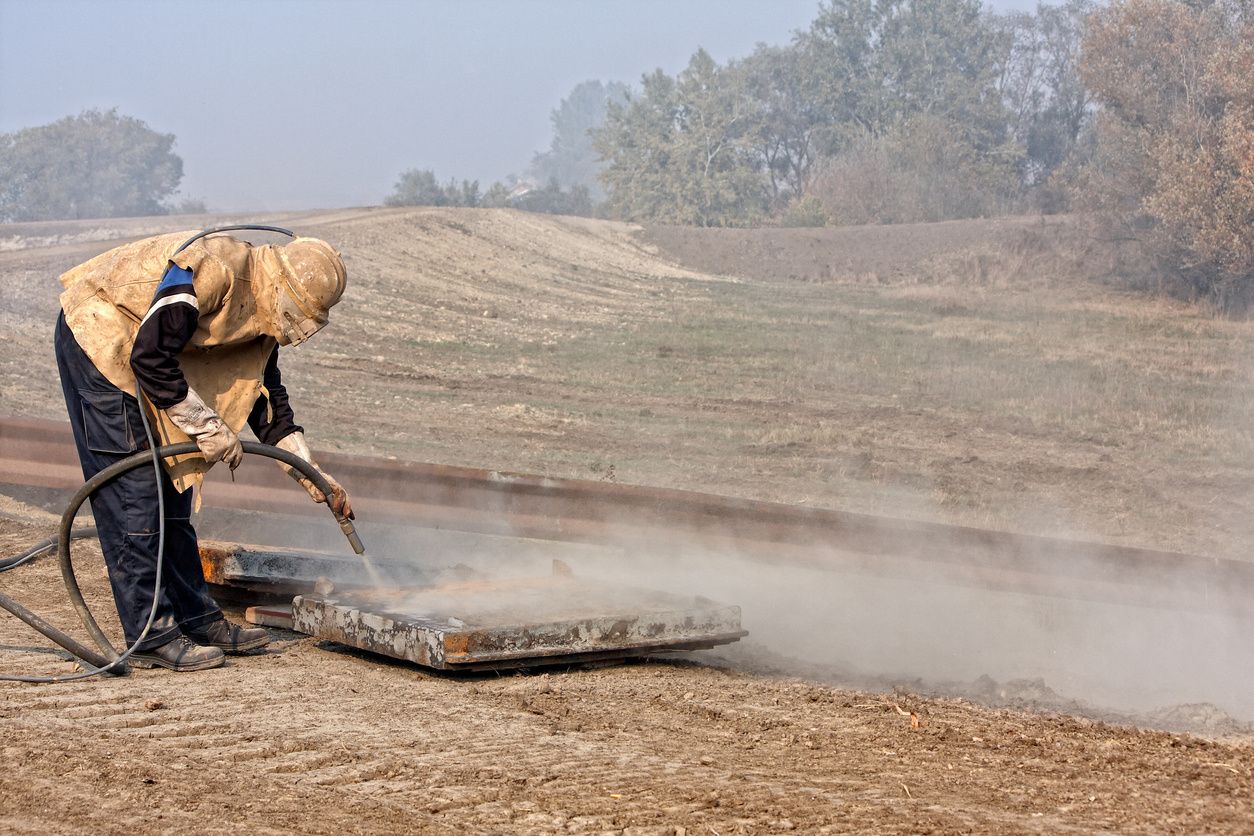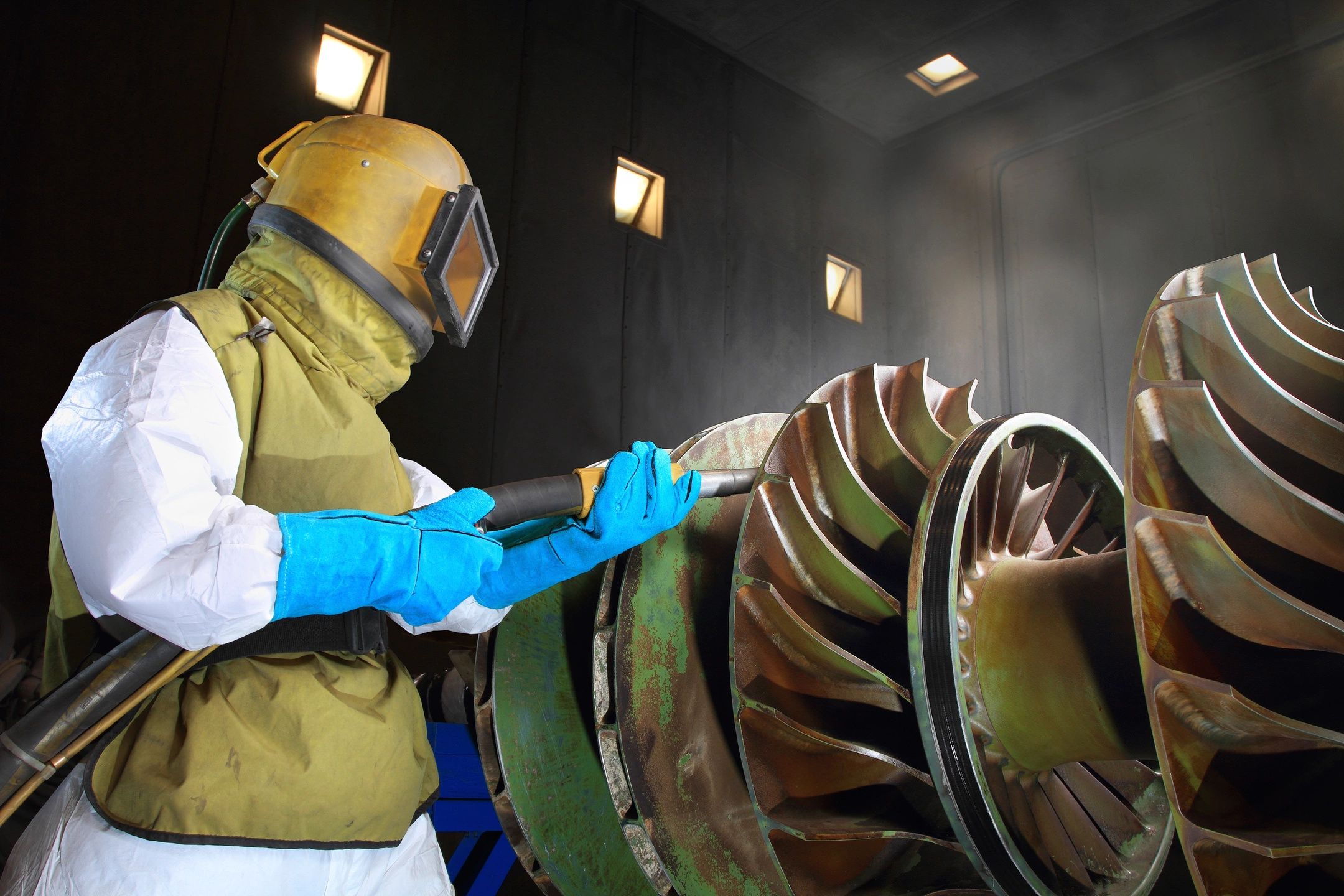

Let's pretend we are going to remove the paint by Sand Blasting. Think about it from the perspective of the paint. That's right we are going to project rocks that are 3 times larger than the thickness of the paint at the fender at a high velocity. The sand is denser than the paint too. The force of the impact smashes and chops through the paint. The sand is harder than the metal as well. Any of the impact force that was not dissipated by the paint is now whacking the metal. Remember this is a thick, steady stream of sand. There is a lot of sand battering the bare metal and the surface ends up pitted and rough. The metal is stripped bare with only a dusting of the pulverized sand covering its scarred surface. Within hours, the ambient moisture in the air will begin to attack the metal and the process of oxidation (rust) will begin.
With my fender stripped of paint, I can now clean and neutralize it with Hold Tight 102 and paint it a new color. The dust from the soda blasting can be rinsed off, it will dissolve in water. If there are any bits stuck in crevasses, they too will dissolve and rinse away. If I had sand blasted, I would have to rinse and wipe and wipe and rinse. I would have to take extra care to make sure there was no grit left in any crevasses. Imagine all of that uncomfortable grit left over from sand blasting. Little bits grinding into your floor, in the seams of your clothing, stuck between your teeth. When it comes to final clean up, Baking Soda being water soluble is a blessing. You can only get so much with a broom, being able to easily rinse away any remaining dust is a huge time saver!

Cleaning anything with soda blasting is a vastly superior process . You can easily remove carbon, grease, oils, gasket material, surface corrosion, paint and coatings from a variety of alloys, plastics and composites without substrate damage or distortion, and leave hard anodized coatings intact.
When you are soda blasting you are saving time by cleaning, de-greasing and de-painting all in one step. What better paint preparation could there be?
